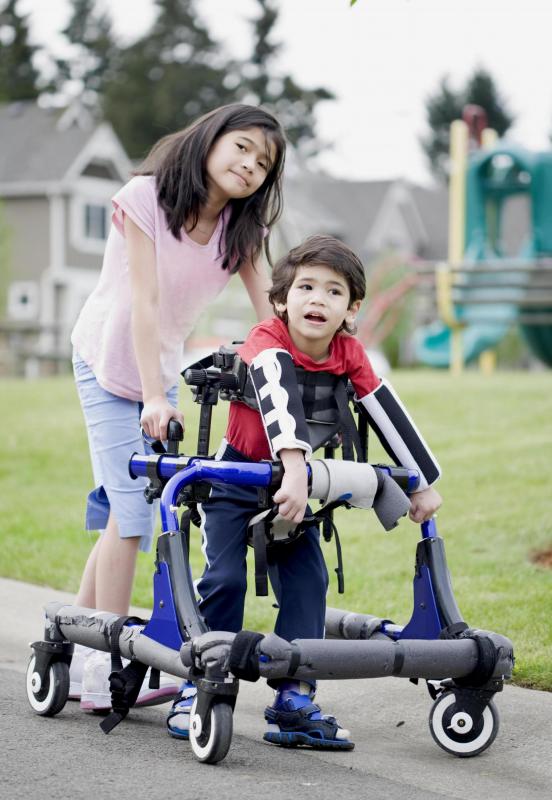At WiseGEEK, we're committed to delivering accurate, trustworthy information. Our expert-authored content is rigorously fact-checked and sourced from credible authorities. Discover how we uphold the highest standards in providing you with reliable knowledge.
What are the Different Types of Cerebral Palsy Exercises?
Cerebral palsy is a brain disorder that can cause both intellectual and physical developmental problems. This disorder can be congenital, in which a child is born with brain damage, or the brain damage can occur shortly after birth. Treatment for this disorder typically includes medication to control symptoms such as muscle spasms and surgery to treat muscle and nerve problems. One of the most important facets of treatment for cerebral palsy is physical rehabilitation, which includes various types of cerebral palsy exercises to improve body condition.
Exercises for cerebral palsy tend to focus on building one or more of the following physical attributes: bone strength, muscle flexibility and range of motion, cardiac and circulatory system health and endurance and strength. Someone with cerebral palsy can use various types of exercise according to his or her current capability and their exercise goals. For example, not all individuals can stand unaided, and others have sufficient physical capability to walk, jog or climb stairs.

Almost anyone with cerebral palsy can carry out basic stretching exercises, whether sitting or standing. People who have trouble with stretches can use assisted stretching, in which a physical therapist, family member or care-giver helps by extending and flexing the limbs. Assisted stretching is a common cerebral palsy exercise that parents can use to help improve flexibility in babies and young children.

Several types of cerebral palsy exercises can help improve cardiovascular fitness for people who cannot stand or walk unassisted. One such exercise is the use of an arm or leg cycle, which can be done indoors or outdoors using stationary, semi-portable equipment. This type of exercise is ideal for people with cerebral palsy because it improves muscle strength as well as cardiovascular health, and because it can be done while sitting in a chair that provides the necessary support.

People with cerebral palsy who have sufficient mobility and strength might be able to walk, jog or climb stairs for exercise. This type of exercise helps promote muscle strength and flexibility, improves cardiovascular fitness and improves circulation. This type of exercise does require a significant amount of physical strength and capability, and it is not suitable for everyone.
Regardless of the extent of physical capability, dancing can be an excellent form of exercise, because both seated and standing dance can improve strength, flexibility and muscle control. Dance can help increase exercise motivation as well as provide physical benefits, especially for younger people with cerebral palsy. Children often find dance enjoyable, and parents can provide props such as balloons, ribbons and even costumes to make dance-based cerebral palsy exercises fun.
Aquatic exercises are ideal because they allow the individual to exercise in an environment that reduces strain on joints and bones. Swimming and other forms of water exercise help improve body flexibility and are a good way to encourage different types of movement, especially in children. One particular advantage of aquatic cerebral palsy exercises is that while in the water, there is no risk of falling or sustaining injury because of erratic muscle or limb movements. Floating devices can be worn to ensure that swimming is a safe activity, and children should be supervised at all times.
One particularly beneficial aspect of cerebral palsy exercises is that a good exercise program sometimes can reduce the need for medication or surgery. This is because someone with cerebral palsy can gain improved strength, flexibility, muscle control and other benefits. In some cases, this might mean less medication is needed to control symptoms, or even that medication alone can control symptoms in a case where surgery otherwise might have been required.
AS FEATURED ON:
AS FEATURED ON:













Discuss this Article
Post your comments